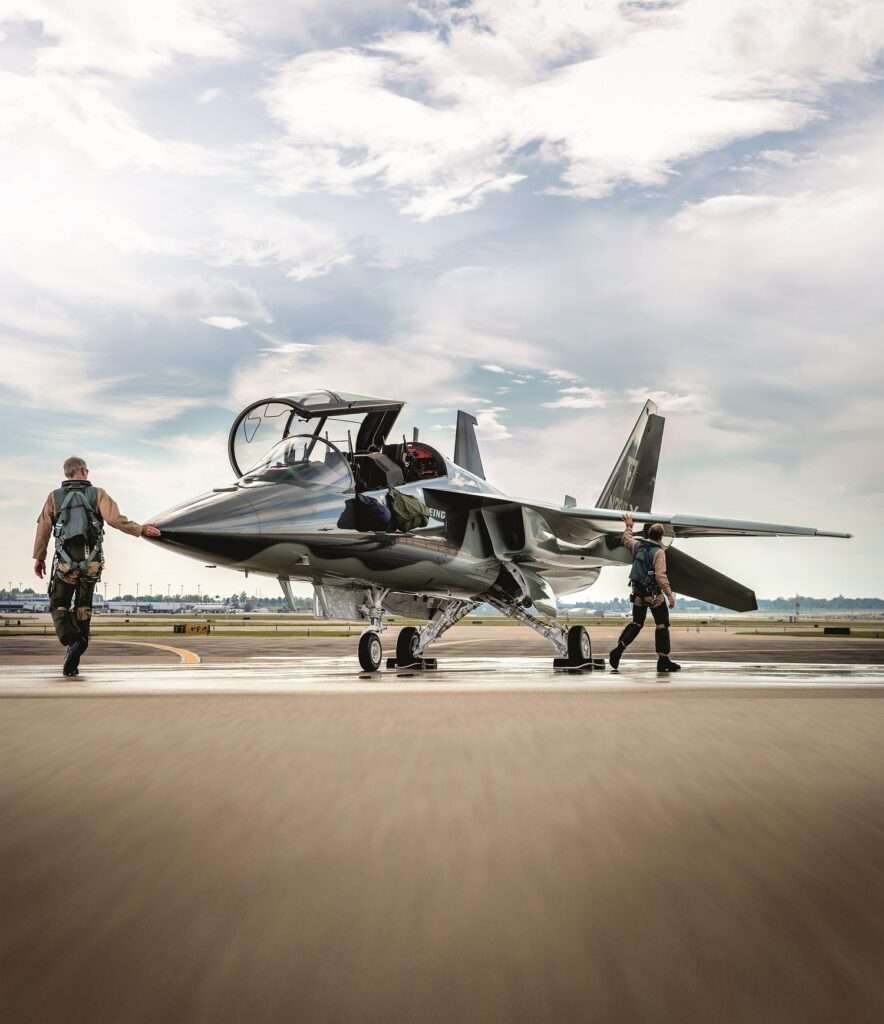
Boeing has developed the T-7 advanced pilot training system to meet the need for modern militaries to quickly deploy effective and comprehensive training systems that will prepare pilots for the demands of next-generation fighter aircraft.
“The T-7 advanced pilot training system was developed to meet the modern militaries’ need for quickly deploying effective and comprehensive training systems that will prepare pilots for the demands of next-generation fighter aircraft,” said Rick Lemaster, International Business Development Leader for the Middle East. “This system delivers an advanced trainer aircraft as well as real-as-it-gets simulation and a complete suite of instructor tools to ensure optimum results on the ground and in the ‘classroom in the sky.’”

Modern training programs need the flexibility to train pilots to fly highly advanced aircraft while being able to adapt to accommodate future technologies and multiple mission roles as technology and systems evolve. Training systems also need to take the most cost-effective approach to deliver training by utilizing an integrated program that includes the latest on-ground training combined with a highly-effective aircraft that is easy to maintain with a focus on adaptability for future demand.
The Ground-Based Training Systems (GBTS) also include a full range of physical devices and instructional techniques to prepare students for and supplement training conducted in the T-7. The aircraft is a flexible, modifiable solution that adapts easily to people, software, and systems so future technologies can be easily implemented, pilots can adjust to their personal preferences, and the entire system can be applied to other missions as requirements change. By adapting to evolving technologies and learning methods and downloading more expensive training, the T-7 produces better-prepared pilots in less time.
“The T-7 was developed with a maintenance-friendly design and increased aircraft readiness while simultaneously lowering sustainment costs,” said Lemaster. “Its common sub-systems with 4th and 5th-gen fighters allow the use of existing maintenance infrastructure, further reducing life cycle costs.”
Key maintenance features that significantly improve mean time to repair, such as a high wing, easy access doors, and quick release panels, mean that the T-7 is more reliable and mission ready.
Boeing created this future-ready system thanks to the ‘digitally-native’ approach embraced by the T-7 program. The T-7 went from firm concept to first flight in 36 months thanks to model-based engineering and this purpose-built digital approach.
Boeing engineers applied this model-based engineering and advanced manufacturing and testing techniques, which, when compared to traditional aircraft development programs, meant that the T-7A experienced a 75% increase improvement in first-time engineering quality, an 80% reduction in assembly hours, and a 50% reduction in software development and verification time.
“The T-7A is designed for the U.S. Air Force as an advanced jet trainer. However, it will have the flexibility to support the requirements of many of our customers for training systems and beyond. We see potential global market opportunities, not including the U.S. Air Force, of up to 1,300 aircraft plus ground-based trainers and advanced simulation technologies.” said Lemaster.
The T-7 will support the core curriculum for the warfighter’s training programs for the United States and its allies for decades to come.








Be the first to comment